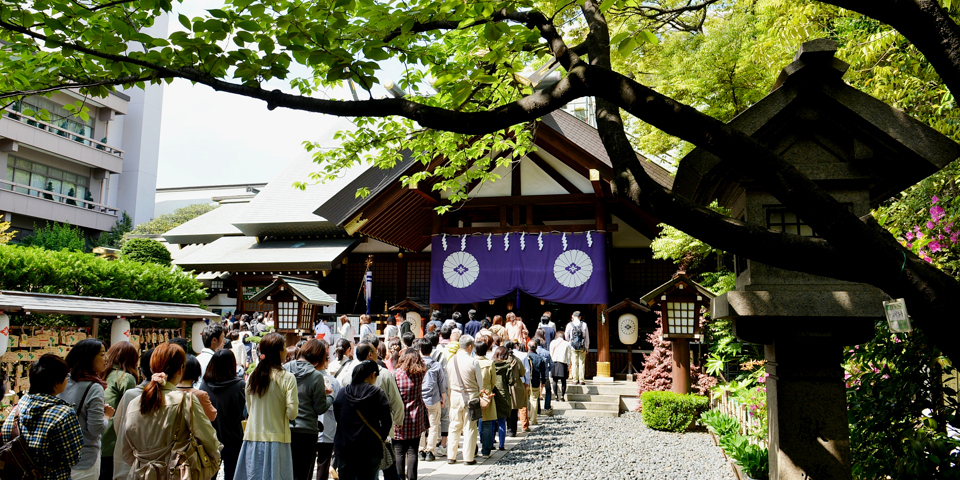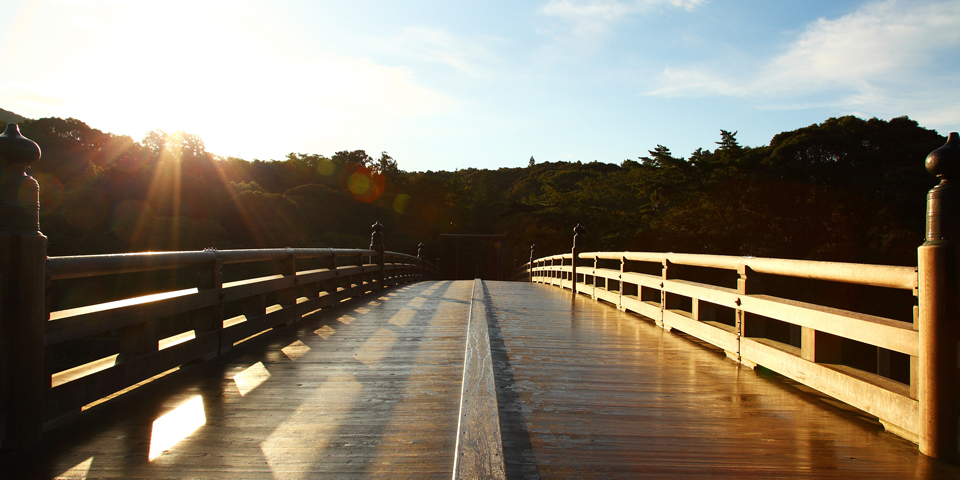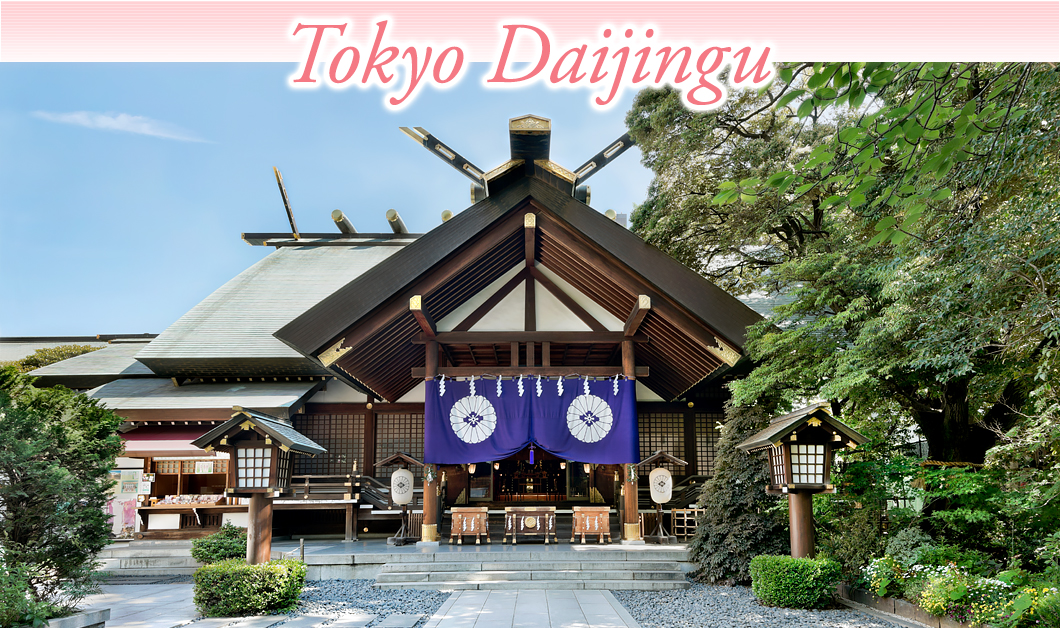Historical Background of Shinto
Shinto is the faith practised by the Japanese since long ago to worship all the deities of heaven and earth. Its origin is as old as the history of the country.
After Buddhism was introduced in the 6th century, people started to call their original religion ‘Shinto,’ which means ‘Kami Way’ (Deities’ Way), as they realised the difference between their indigenous religion and the newly introduced one.
Since then, Shinto has developed, accepting the influence of foreign religions centering around Buddhism, but without changing its essential character, that of worshipping mythical deities as well as the spirits of the people’s own ancestors.
There are about eighty thousand Shinto shrines throughout Japan nowadays, and they are playing an important role in the community life of the Japanese in keeping alive the traditional aspects of Japan.
After Buddhism was introduced in the 6th century, people started to call their original religion ‘Shinto,’ which means ‘Kami Way’ (Deities’ Way), as they realised the difference between their indigenous religion and the newly introduced one.
Since then, Shinto has developed, accepting the influence of foreign religions centering around Buddhism, but without changing its essential character, that of worshipping mythical deities as well as the spirits of the people’s own ancestors.
There are about eighty thousand Shinto shrines throughout Japan nowadays, and they are playing an important role in the community life of the Japanese in keeping alive the traditional aspects of Japan.
(Note)
The term “shrine,” in English, tends to mean a tomb or casket containing holy relics, or an altar or chapel with special religious associations or hallowed by some event. However, Japanese shrines are different and are, rather, respected places for worship where deities (kami in Japanese) inhabit or descend. They do not contain holy relics.
The term “shrine,” in English, tends to mean a tomb or casket containing holy relics, or an altar or chapel with special religious associations or hallowed by some event. However, Japanese shrines are different and are, rather, respected places for worship where deities (kami in Japanese) inhabit or descend. They do not contain holy relics.
Divine Virtue
Tokyo Daijingu is affectionately called ‘O-Ise-sama in Tokyo’ because of its enshrined deities. These include: Amaterasu-Sume-Ohkami, the ancestral deity of the Imperial Family and the tutelary deity of all the Japanese; Toyouke-no-Ohkami, the guardian deity of agriculture, industry, clothing, food and housing (both of whom are also enshrined in the Grand Shrine of Ise) ; and Yamatohime-no-mikoto, the founder of the Inner Shrine of the Grand Shrine of Ise. Tokyo Daijingu also enshrines three deities who are in charge of the creation and growth of all things. With the divine power of these deities of creation and growth which includes the virtue of togetherness, Tokyo Daijingu is popular as a shrine for a good marriage, and visits by young people have been constantly on the increase.
Enshrined Deities
Amaterasu-Sume-Ohkami, the ancestral deity of the Imperial Family and the tutelary deity of all the Japanese, and who is enshrined in the Inner Shrine of the Grand Shrine of Ise.
Toyouke-no-Ohkami, the guardian deity of agriculture, industry, clothing, food and housing, and who is enshrined in the Outer Shrine of the Grand Shrine of Ise.
Three deities of creation and growth: Ameno-Minakanushi-no-kami, Takamimusubi-no-kami, and Kamimusubi-no-kami.
Yamatohime-no-mikoto, the founder of the Inner Shrine of the Grand Shrine of Ise.
Toyouke-no-Ohkami, the guardian deity of agriculture, industry, clothing, food and housing, and who is enshrined in the Outer Shrine of the Grand Shrine of Ise.
Three deities of creation and growth: Ameno-Minakanushi-no-kami, Takamimusubi-no-kami, and Kamimusubi-no-kami.
Yamatohime-no-mikoto, the founder of the Inner Shrine of the Grand Shrine of Ise.
History of Tokyo Daijingu

In the Edo era (1603-1867), the greatest wish of every Japanese was to make a pilgrimage to the Grand Shrine of Ise (Ise Jingu), where Amaterasu-Sume-Ohkami and other deities were enshrined.
The new era of Modern Japan began with the Meiji Restoration in 1868 and a new shrine was built in Tokyo in 1880 with the approval of Emperor Meiji. This shrine enabled people in Tokyo to worship the deities enshrined in the Grand Shrine of Ise from afar. At first this new shrine was called ‘Hibiya Daijingu,’ taking the name of the area in which it was located. After the Kanto Earthquake, it was moved to its present site of Iidabashi in 1928, and it was renamed ‘Iidabashi Daijingu’.
After the Second World War it changed its name to ‘Tokyo Daijingu’ and has been piously worshipped not only by the Tokyoites but also by the people of the entire Kanto area. Tokyo Daijingu is also known for being the first one to have established the Shinto wedding ceremony in Japan, which is nowadays widely performed throughout the country.
The new era of Modern Japan began with the Meiji Restoration in 1868 and a new shrine was built in Tokyo in 1880 with the approval of Emperor Meiji. This shrine enabled people in Tokyo to worship the deities enshrined in the Grand Shrine of Ise from afar. At first this new shrine was called ‘Hibiya Daijingu,’ taking the name of the area in which it was located. After the Kanto Earthquake, it was moved to its present site of Iidabashi in 1928, and it was renamed ‘Iidabashi Daijingu’.
After the Second World War it changed its name to ‘Tokyo Daijingu’ and has been piously worshipped not only by the Tokyoites but also by the people of the entire Kanto area. Tokyo Daijingu is also known for being the first one to have established the Shinto wedding ceremony in Japan, which is nowadays widely performed throughout the country.
Main Annual Festivals
| Jan.1 | New Year’s Day Festival (Saitan-sai) |
|---|---|
| Jan.3 | Commencement Festival (Genshi-sai) |
| 2nd Mon. of Jan. | Coming-of-Age Festival (Seijin-sai) |
| Feb.3 or 4 | Festival of the Day before the Beginning of Spring (Setsubun-sai) |
| Feb.11 | National Foundation Day Festival (Kigen-sai) |
| Feb.17 | Festival of Prayer for a Good Harvest (Kinen-sai) |
| Feb.23 | Emperor’s Birthday Festival (Tencho-sai) |
| Apr.16 | Eve of the Annual Grand Festival (Yoimiya-sai) |
| Apr.17 | Annual Grand Festival (Rei-sai) |
| Apr.29 | Emperor Showa’s Birthday Festival (Showa-sai) |
| Jun.30 | Great Purification (Oharae) |
| Oct.17 | Autumn Grand Festival (Shuki-taisai) |
| Oct.23 (on or around) | Tea Festival (Kencha-sai) |
| Nov.3 | Emperor Meiji’s Birthday Festival (Meiji-sai) |
| Nov.23 | Harvest Festival (Niiname-sai) |
| Dec.31 | Great Purification (Oharae) and Year-End Ritual (Joya-sai) |
Grand Shrine of Ise〈Ise Jingu〉

The Grand Shrine of Ise (Ise Jingu) is the generic name for the 125 Shinto shrines in Ise centered around the Inner Shrine (Naiku) which enshrines Amaterasu-Sume-Ohkami, worshipped as the ancestral deity of the Imperial Family and the tutelary deity of all the Japanese, and the Outer Shrine (Geku) which enshrines Toyouke-no-Ohkami who is the guardian deity of agriculture, industry, clothing, food and housing which are all indispensable for our daily life. Since ancient times, people have ceaselessly visited the Grand Shrine of Ise in order to worship these deities, affectionately calling it ‘O-Ise-sama’.
Tokyo Daijingu
Address : 2-4-1, Fujimi, Chiyoda-ku, Tokyo, 102-0071 Japan
TEL : +81-3-3262-3566 / FAX : +81-3-3261-4147
URL : https://www.tokyodaijingu.or.jp/
TEL : +81-3-3262-3566 / FAX : +81-3-3261-4147
URL : https://www.tokyodaijingu.or.jp/













